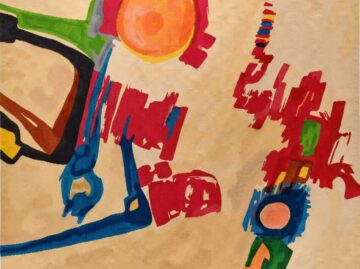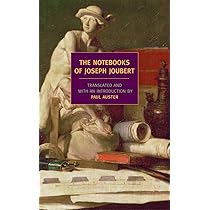Henry Farrell over at his substack Programmable Mutter:
The back story to this post doesn’t start with Brian Eno. Back in 1991, the political scientist Adam Przeworski published a book, Democracy and the Market. Most of the book was about the democratic transition in Central and Eastern Europe, and it was very good as best as I can judge these things. But the first chapter was much, much better than very good. It laid out a brief theory of democracy that reshaped the ways in which political scientists think about it.
Przeworski’s theory starts from a simple seeming claim: that “democracy is a system in which parties lose elections.” It then uses a combination of game theory and informal argument to lay out the implications. If we assume (as Przeworski assumes) that parties and political decision makers are self-centered, why would the ruling party ever accept that they had lost and relinquish control of government? Przeworski argues that it must somehow be in their self-interest to so. He argues that they will admit defeat if they see that the alternative is worse, and (this is crucial) because democracy generates sufficient uncertainty about the future that they believe they might win in some future election. They know that they will hurt their interests if they refuse to give in, and they have some (unquantifiable but real) prospect of coming back into power again. Democracy, then, will be stable so long as the expectation of costs and the uncertainty of the future give the losers sufficient incentive to accept that they have lost.
This is a more beautiful idea than I am able to explain in a brief post, and certainly much more beautiful than any argument I will ever come up with myself. It compresses a vast and turbid system of enmeshed ambitions and behaviors into a deceptively simple nine word thesis
More here.
Enjoying the content on 3QD? Help keep us going by donating now.


 New research has identified
New research has identified  My favorite thing to do at Krispy Kreme to stave off the boredom is stack the donuts on top of each other and then squish them down into a “sandwich.” When they are hot, they flatten in an extreme way. I can get about twelve in the pile before things get messy. Some days, this donut sandwich is all I eat, other than maybe one other thing, a giant slice of pizza from Sbarro or orange chicken from Panda Express in the mall across the vast parking lot, which I pay for with my meager tip money. I also drink excessive amounts of the whole chocolate milk we sell. This anorexic, sugary diet means I weigh just under 110 pounds and am always jittery.
My favorite thing to do at Krispy Kreme to stave off the boredom is stack the donuts on top of each other and then squish them down into a “sandwich.” When they are hot, they flatten in an extreme way. I can get about twelve in the pile before things get messy. Some days, this donut sandwich is all I eat, other than maybe one other thing, a giant slice of pizza from Sbarro or orange chicken from Panda Express in the mall across the vast parking lot, which I pay for with my meager tip money. I also drink excessive amounts of the whole chocolate milk we sell. This anorexic, sugary diet means I weigh just under 110 pounds and am always jittery. For hard as it still may be to believe, let alone process, in barely one hundred days we have already fallen into a form of governance in which legally resident individuals (currently by and large immigrants of one sort or another—mothers, fathers, students with entirely current green cards or asylum claims—but with every indication that such tactics will presently be getting extended to full-fledged citizens as well) are literally being spirited off the streets by masked men in unmarked cars and, without the slightest due process or the most tenuous access to any sort of recourse, whisked off to prisons, both at home and abroad, seemingly beyond the sanction of any sort of judicial oversight (the rulings of judges flagrantly ignored and the judges themselves now starting to get subjected to arbitrary arrest as well simply for even having expressed them), the legislative branch cowed into impotence by the abject servitude of its barely majority party, the executive branch a whipsaw of whims and tantrums, with no end in sight.
For hard as it still may be to believe, let alone process, in barely one hundred days we have already fallen into a form of governance in which legally resident individuals (currently by and large immigrants of one sort or another—mothers, fathers, students with entirely current green cards or asylum claims—but with every indication that such tactics will presently be getting extended to full-fledged citizens as well) are literally being spirited off the streets by masked men in unmarked cars and, without the slightest due process or the most tenuous access to any sort of recourse, whisked off to prisons, both at home and abroad, seemingly beyond the sanction of any sort of judicial oversight (the rulings of judges flagrantly ignored and the judges themselves now starting to get subjected to arbitrary arrest as well simply for even having expressed them), the legislative branch cowed into impotence by the abject servitude of its barely majority party, the executive branch a whipsaw of whims and tantrums, with no end in sight. The lead singer and primary lyricist of the long-running rock band U2, Bono has never exactly been the shy type. Outside of Elvis posing with Nixon, no rock star has seemed so comfortable posing with so many politicians, and Bono has perhaps set the record for the most Rock ’n’ Roll Hall of Fame induction speeches given.3 A preacherly ambition propels Bono’s memoir, Surrender: 40 Songs, One Story, as the book chronicles U2’s forty-odd-year career, and the book’s impact hinges on your openness to Bono’s expansiveness. While no fruit is thrown at rock royalty, Surrender as a whole offers a smart and charmingly self-deprecating portrait of Bono and his three friends from Dublin as they propel themselves from scruffy post-punk band to one of the last of the great rock ’n’ roll acts, one of the few bands from their era that can stand with the Stones and the McCartneys in the cavernous sports arenas around the world. If a talking head is needed to wax poetic on America, rock ’n’ roll, debt relief, religion, sex, life, death—I am sure he has an opinion on cross-stitching—Bono is the person to turn to.
The lead singer and primary lyricist of the long-running rock band U2, Bono has never exactly been the shy type. Outside of Elvis posing with Nixon, no rock star has seemed so comfortable posing with so many politicians, and Bono has perhaps set the record for the most Rock ’n’ Roll Hall of Fame induction speeches given.3 A preacherly ambition propels Bono’s memoir, Surrender: 40 Songs, One Story, as the book chronicles U2’s forty-odd-year career, and the book’s impact hinges on your openness to Bono’s expansiveness. While no fruit is thrown at rock royalty, Surrender as a whole offers a smart and charmingly self-deprecating portrait of Bono and his three friends from Dublin as they propel themselves from scruffy post-punk band to one of the last of the great rock ’n’ roll acts, one of the few bands from their era that can stand with the Stones and the McCartneys in the cavernous sports arenas around the world. If a talking head is needed to wax poetic on America, rock ’n’ roll, debt relief, religion, sex, life, death—I am sure he has an opinion on cross-stitching—Bono is the person to turn to. For as long as our species has lived in settled communities, we have struggled to provide ourselves with water. If modern agriculture, the subject of
For as long as our species has lived in settled communities, we have struggled to provide ourselves with water. If modern agriculture, the subject of  I have deep affection for the people of both India and Pakistan, and am dismayed by what I see as a looming train wreck on the Indus, with disastrous consequences for both countries. I will outline why there is no objective conflict of interests between the countries over the waters of the Indus Basin, make some observations of the need for a change in public discourse, and suggest how the drivers of the train can put on the brakes before it is too late.
I have deep affection for the people of both India and Pakistan, and am dismayed by what I see as a looming train wreck on the Indus, with disastrous consequences for both countries. I will outline why there is no objective conflict of interests between the countries over the waters of the Indus Basin, make some observations of the need for a change in public discourse, and suggest how the drivers of the train can put on the brakes before it is too late. A few years ago
A few years ago It is almost certainly the most consequential 100 days that scientists in the United States have experienced since the end of World War II.
It is almost certainly the most consequential 100 days that scientists in the United States have experienced since the end of World War II. On October 6, 1973, Pramoedya Ananta Toer was ordered by prison guards to run double-time across Buru Island. The writer had been arrested eight years before, taken into custody in the middle of the night. Detained without charges alongside thousands of other men and women, Toer was sent to Buru—a prison island far east of Java and Bali—and forced to toil under the scorching sun. He was desolate, not only because of the Sisyphean labor he was made to perform, the inability to write, and the gnawing feeling of injustice, but also because he was separated from his family. Before prison, he had been happily married to his beloved Maimoenah, his second wife and mother to five of his children. After several years of seclusion from the outside world, Toer was hopeful that the press junket he was being forced to attend could be an opportunity to petition for the freedoms that had been revoked when he was imprisoned, if not ensure his release. It would be the closest he would get to a trial, during which he could publicly question the validity of his arrest.
On October 6, 1973, Pramoedya Ananta Toer was ordered by prison guards to run double-time across Buru Island. The writer had been arrested eight years before, taken into custody in the middle of the night. Detained without charges alongside thousands of other men and women, Toer was sent to Buru—a prison island far east of Java and Bali—and forced to toil under the scorching sun. He was desolate, not only because of the Sisyphean labor he was made to perform, the inability to write, and the gnawing feeling of injustice, but also because he was separated from his family. Before prison, he had been happily married to his beloved Maimoenah, his second wife and mother to five of his children. After several years of seclusion from the outside world, Toer was hopeful that the press junket he was being forced to attend could be an opportunity to petition for the freedoms that had been revoked when he was imprisoned, if not ensure his release. It would be the closest he would get to a trial, during which he could publicly question the validity of his arrest. A
A